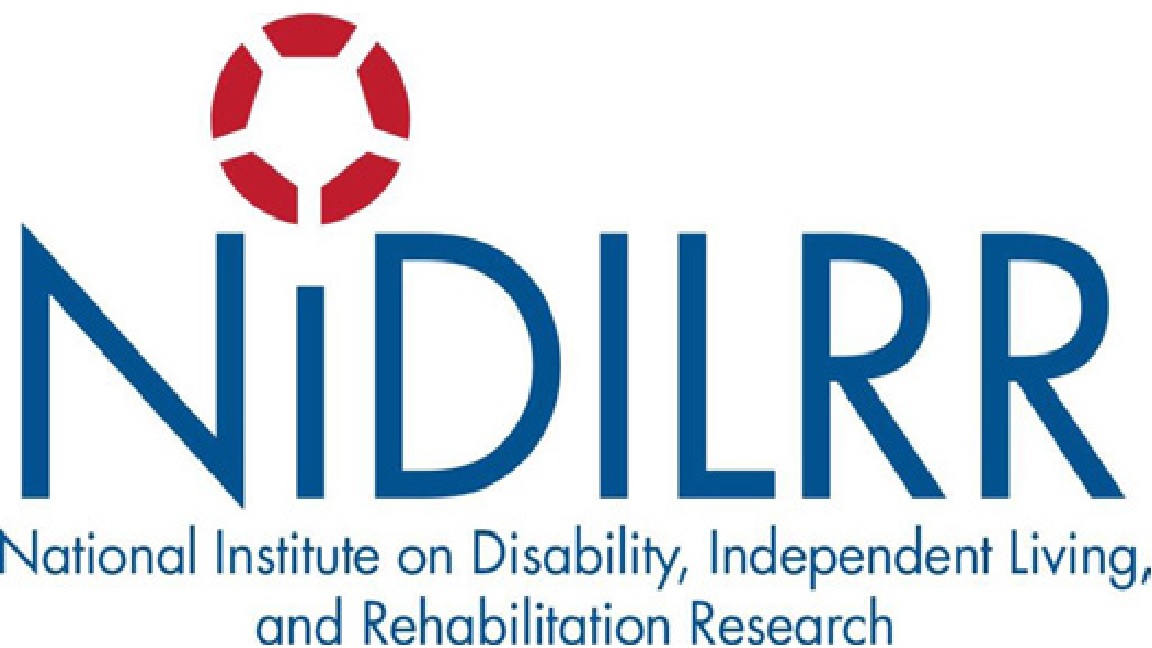2017 State Report for County-Level Data: Employment
Special thanks to the following individuals who have contributed to the success of this effort: Deb Brucker, Erin Dame, Adam Lavoie, Kate Filanoski, Karen Volle, and Anna Brennan-Curry.
Funding for this publication is made possible by:
The Rehabilitation Research and Training Center on Disability Statistics and Demographics (StatsRRTC), funded by the U.S. Department of Health and Human Services Administration for Community Living National Institute on Disability, Independent Living, and Rehabilitation Research (NIDILRR), grant number 90RTGE0001-01-00; and the Rehabilitation Research and Training Center on Employment Policy and Measurement (EPM-RRTC), also funded by NIDILRR, grant number 90RT5037-03-00. The information developed by the StatsRRTC and EPM-RRTC does not necessarily represent the policies of the Department of Health and Human Services, and you should not assume endorsement by the Federal Government (Edgar, 75.620 (b)).
The StatsRRTC and EPM-RRTC are part of the Institute on Disability at the University of New Hampshire. The Institute on Disability/UCED (IOD) was established in 1987 to provide a university-based focus for the improvement of knowledge, policies, and practices related to the lives of people with disabilities and their families and is New Hampshire’s University Center for Excellence in Disability (UCED). Located within the University of New Hampshire, the IOD is a federally designated center authorized by the Developmental Disabilities Act. Through innovative and interdisciplinary research, academic, service, and dissemination initiatives, the IOD builds local, state, and national capacities to respond to the needs of individuals with disabilities and their families.
Institute on Disability / UCED
![]()
10 West Edge Drive, Suite 101 | Durham, NH 03284 603.862.4320 | relay: 711 | contact.iod@unh.edu | https://www.iod.unh.edu
Copyright 2019. Institute on Disability. University of New Hampshire.
Introduction
The State Reports for County-Level Data on Employment are designed to provide the users of disability statistics with the employed count and employment rate for civilians with disabilities, ages 18 to 64 years and living in the community, for any given state and county in the United States (U.S.). This report is intended to be an online complement to Section 2: Employment of the Annual Disability Statistics Compendium and Annual Disability Statistics Supplement, providing greater detail within each state. The State Reports for County-Level Data on Employment can be used to compare county-level statistics between counties in any given state or states. The following report provides county-level statistics for Louisiana.
The proportion of the civilian non-institutionalized population with disabilities who are employed, sometimes called the employment rate or employment-to-population ratio, presented in the State Reports for County-Level Data is a useful tool for advocates, researchers, and policy-makers to plan and provide services and supports for the employment of people with disabilities. In this report, the employment of people with disabilities is presented as the number of employed civilians with disabilities, ages 18 to 64 years and living in the community, in a given state and county per total state and county populations, respectively. Counts and percentages (the employment rate) are provided in tables and maps.
The data for this report come from the American Community Survey 5-year data. The American Community Survey (ACS) is a national survey developed by the U.S. Census Bureau to provide information on a number of topics about social, economic, and demographic characteristics of the U.S. population. ACS 5-year data is collected over a longer period of time than 1-year data, providing larger sample sizes and increased reliability for less populated areas and small population subgroups. All of the statistics in this report use the ACS 5-year data which includes data from 2017, the year of the report, and data from the four previous years. In the ACS, people are identified as having a disability based on responses to a series of six questions asking about having difficulties with vision, hearing, ambulation, cognition, self-care, and independent living (see glossary for further details).
In the ACS, people are also asked a series of questions designed to identify their employment status. Based on the answers, individuals were classified into one of five groups:
- People who worked at any time during the reference week;
- People on temporary layoff who were available for work;
- People who did not work during the reference week but who had jobs or businesses from which they were temporarily absent (excluding layoff);
- People who did not work during the reference week, but who were looking for work during the last four weeks and were available for work during the reference week; and
- People not in the labor force.
In the ACS, people are identified as being employed if they responded as having worked during the past week.
Specific to Louisiana, the state chosen for this report, sentences providing interpretation and context for employment statistics are included on the following page. A short glossary of terms is also provided at the end of the report explaining the statistics that are illustrated in each sentence.
Additional Resources. The Annual Disability Statistics Compendium and its complement, the Annual Disability Statistics Supplement, are summaries of statistics about people with disabilities, available both in hard copy and online at https://www.disabilitycompendium.org.
Help navigating any of the resources described here can be found in the Frequently Asked Questions section at https://www.disabilitycompendium.org/faq. Assistance interpreting and locating additional statistics is available via our toll-free number, 866.538.9521, or by email, disability.statistics@unh.edu. For more information about our research projects, please visit https://www.researchondisability.org.
Suggested Citation. Boege, S.L., Lauer, E.A., & Houtenville, A.J., 2019. 2017 State Report for Louisiana County-Level Data: Employment. Durham, NH: University of New Hampshire, Institute on Disability.
Interpretation
The following statements are designed to help understand the 2017 county-level employment statistics from Louisiana that are presented:
- For people with disabilities:
- The employment rate for people with disabilities in Louisiana was 32.6%.
- The range, also known as the difference between largest and smallest values, of employment rates for people with disabilities across Louisiana counties was 24.2%.
- The county with the greatest employment rate for people with disabilities was Cameron (42.3%).
- The county with the smallest employment rate for people with disabilities was Caldwell (18.1%).
- The median, also known as the middle-most, employment rate for people with disabilities across all counties in Louisiana was 28.8%.
- For people without disabilities:
- The employment rate for people without disabilities in Louisiana was 72.9%.
- The range, also known as the difference between largest and smallest values, of employment rates for people without disabilities across Louisiana counties was 25.9%.
- The county with the greatest employment rate for people without disabilities was West Baton Rouge (80.4%).
- The county with the smallest employment rate for people without disabilities was Tensas (54.5%).
- The median, also known as the middle-most, employment rate for people without disabilities across all counties in Louisiana was 70.2%.
Discussion
There are a number of concepts and factors which complicate the interpretation of the estimates presented in this report. These concerns affect all statistics from population-based surveys. The estimates included in this document should be interpreted the following limitations in mind and generalized with caution. In each point, a link to the U.S. Census Bureau website describing the limitation or concept in greater detail in the ACS has been provided.
-
Statistics are based on a sample and subject to sample variation
-
Statistics based on a sample may not fully represent the total U.S. population
-
People responding to the ACS may be different than people not responding
Additional links to resources for the ACS:
Glossary
American Community Survey (ACS) — The American Community Survey is a large, continuous demographic survey conducted by the U.S. Census Bureau that will provide accurate and up-to-date profiles of America’s communities every year. Annual and multiyear estimates of population and housing data are generated for small areas, including tracts and population subgroups. This information is collected by mailing questionnaires to a sample of addresses. See the U.S. Census Bureau website for additional details.
The Six Disability Questions in the American Community Survey:
- Is this person deaf or does he/she have serious difficulty hearing? (yes or no)
- Is this person blind or does he/she have serious difficulty seeing even when wearing glasses? (yes or no)
- (If person 5 years old or over) Because of a physical, mental, or emotional condition, does this person have serious difficulty concentrating, remembering, or making decisions? (yes or no)
- (If person 5 years or old over) Does this person have serious difficulty walking or climbing stairs? (yes or no)
- (If person 5 years old or over) Does this person have difficulty dressing or bathing? (yes or no)
- (If person 15 years old or over) Because of a physical, mental, or emotional condition, does this person have difficulty doing errands alone such as visiting a doctor’s office or shopping? (yes or no)
Average — The sum of all of the values in a sample divided by the number of values in the sample.
Civilian — A person not in active-duty military.
Employed – Individuals were asked a series of questions designed to identify their employment status. Based on the answers, individuals were classified into one of five groups: (1) people who worked at any time during the reference week; (2) people on temporary layoff who were available for work; (3) people who did not work during the reference week but who had jobs or businesses from which they were temporarily absent (excluding layoff); (4) people who did not work during the reference week, but who were looking for work during the last four weeks and were available for work during the reference week; and (5) people not in the labor force. People who responded as having worked during the past week were considered "employed".
Employment Rate — The number of individuals that are employed as a percent of the civilian non-institutional population.
Living in the Community – A person lives in the community, if the person is not living in an institution, such as jail, prison, nursing home, and hospital. A college dormitory is not considered an institution.
Median — The middle-most value of a sample that separates the upper half of the values from the lower half of the values.
Non-Institutionalized Population — Describes individuals who are residing in the community and who are not living in institutions such as jails, prisons, nursing homes, hospitals, etc.
Population — The total number of inhabitants in a defined geographic area including all races, classes, and groups.
Range — The difference between the largest and smallest values in a sample. In a sample, when the smallest value is subtracted from the largest value the resulting value is called the range.
Sampling Variability — The variation of a statistic when estimated from repeated samples.
United States Census Bureau — An agency within the United States Federal Statistical System tasked with producing data about the American people and economy. Their primary task is to conduct the United States Census every ten years.
About the Center
Rehabilitation Research and Training Center on Disability Statistics and Demographics (StatsRRTC)
Led by the University of New Hampshire, the StatsRRTC is a collaborative effort involving the following partners: American Association of People with Disabilities, Center for Essential Management Services, Council of State Administrators of Vocational Rehabilitation, Kessler Foundation, Mathematica Policy Research, and Public Health Institute.
The StatsRRTC is funded by the U.S. Department of Health and Human Services, Administration for Community Living, National Institute on Disability, Independent Living and Rehabilitation Research under grant number 90RTGE00010100, from 2018–2023.
Employment Policy and Measurement Rehabilitation Research and Training Center (EPM-RRTC)
Led by the University of New Hampshire, the EPM-RRTC is a collaborative effort involving the following partners: Association of University Centers on Disability, Hunter College, Kessler Foundation, Mathematica Policy Research, and the University of Chicago.
The EPM-RRTC is funded by the U.S. Department of Health and Human Services, Administration for Community Living, National Institute on Disability, Independent Living and Rehabilitation Research under grant number 90RT503701, from 2015–2020.
Contact Information
University of New Hampshire, Institute on Disability
10 West Edge Drive, Suite 101
Durham, NH 03824
Toll-Free Telephone/TTY: 866-538-9521
E-mail: Disability.Statistics@unh.edu
https://www.researchondisability.org







